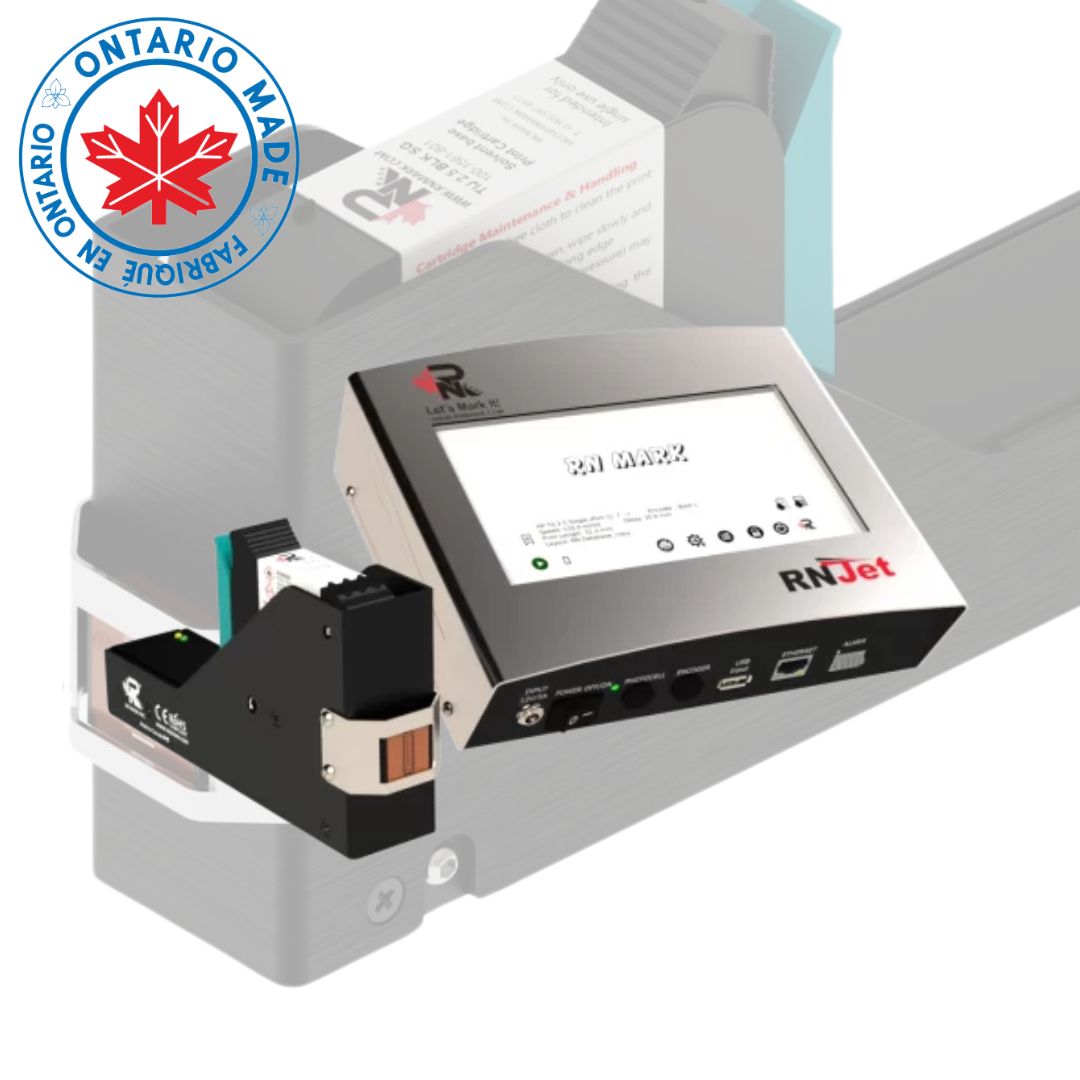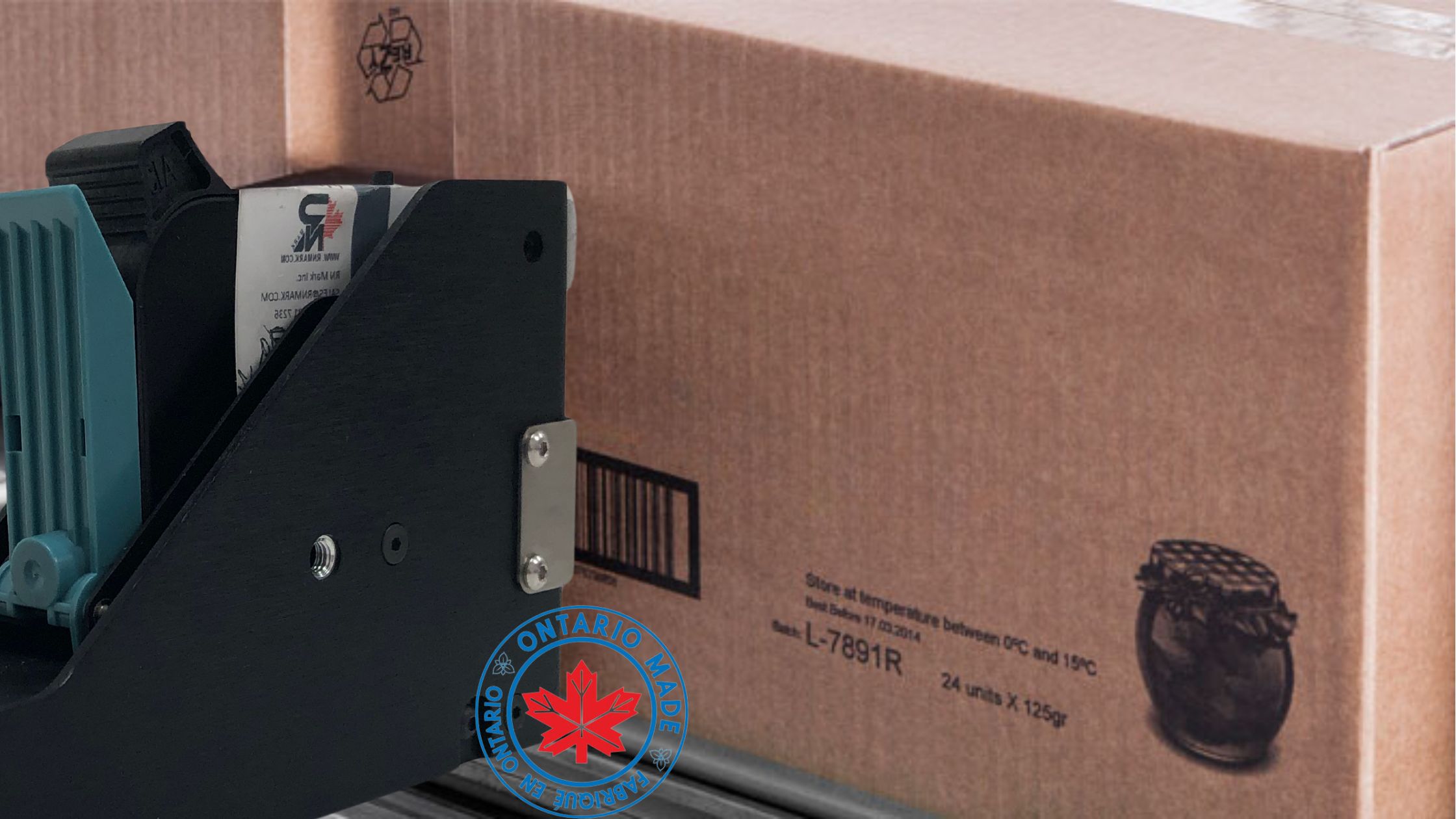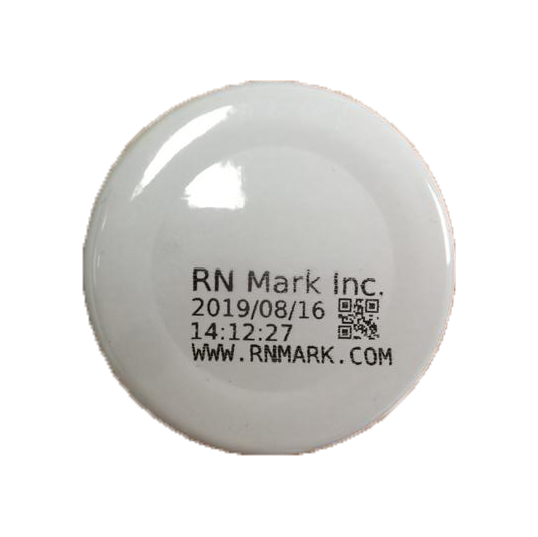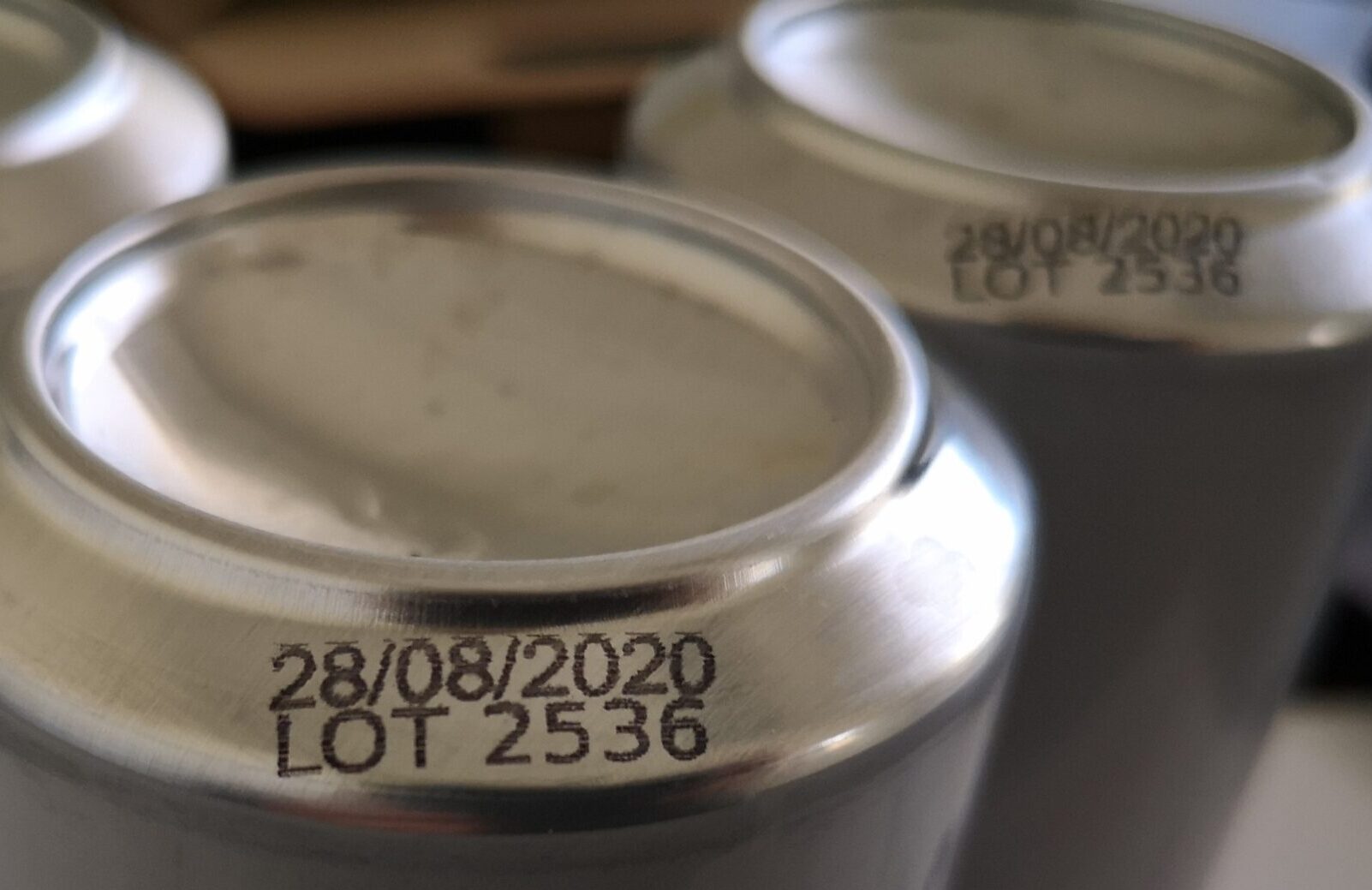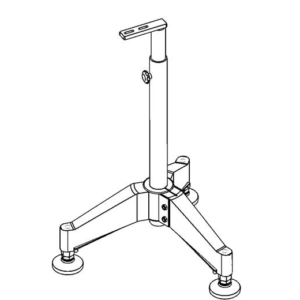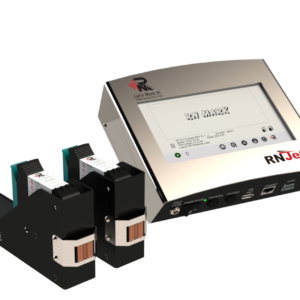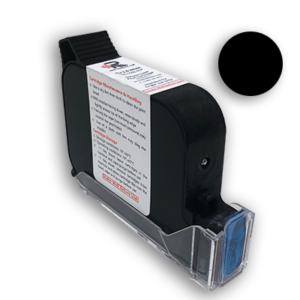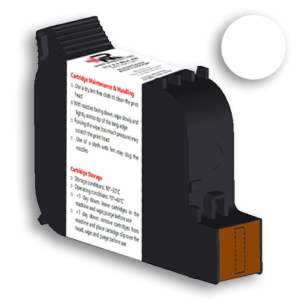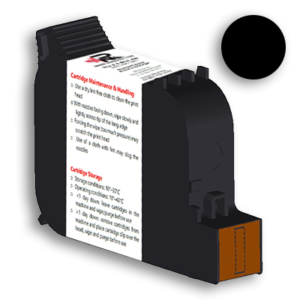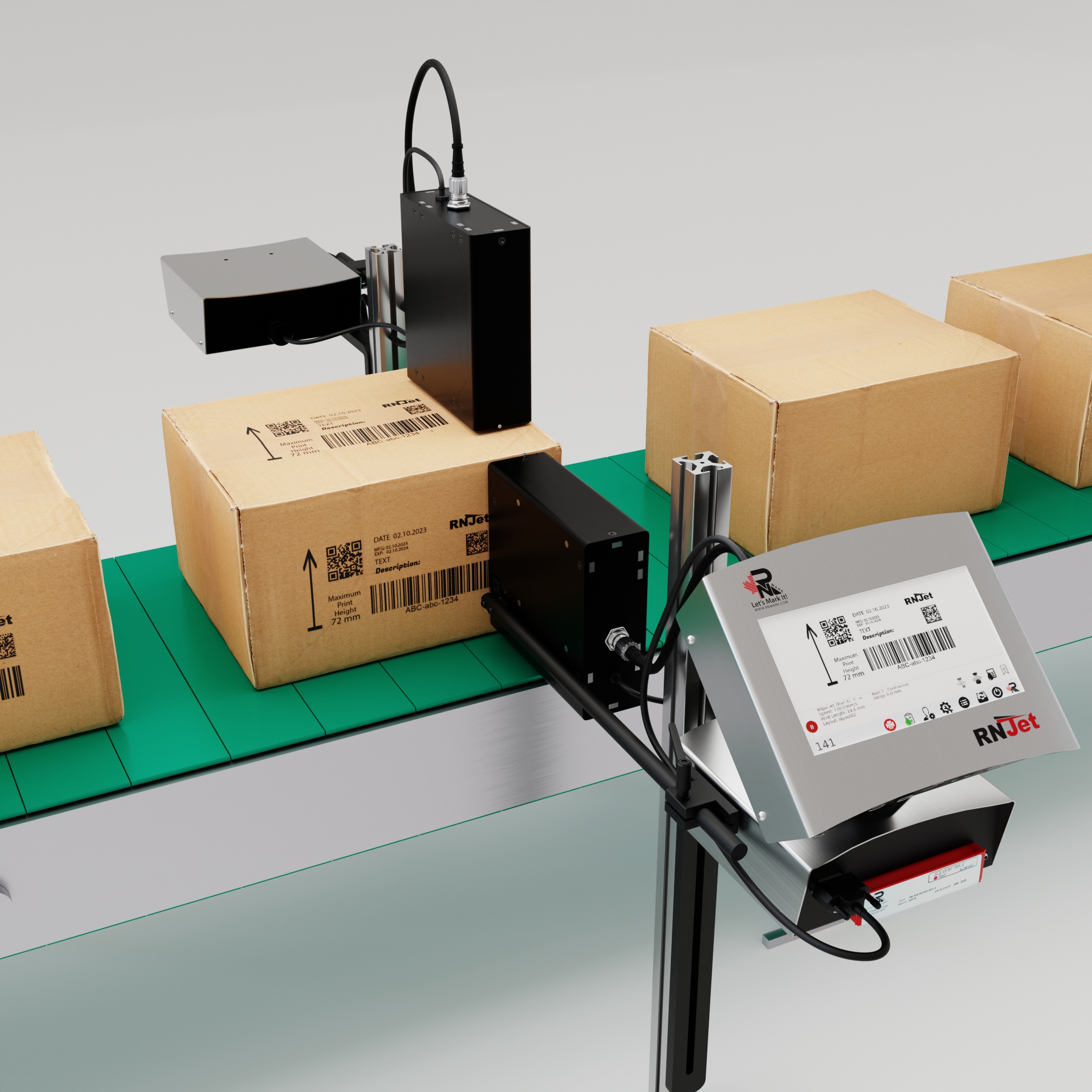Description
The best option is to mark your products with NO maintenance, easy to operate thermal inkjet printer from a Canadian Manufacturer. Ideal for small production with no mess and highly economical!
Which application you could mark with Thermal Inkjet Printer RNJet H1+:
- Automotive
- Brewery Beer Cans
- Egg Printing
- Face Respirators, PPE & MASKS
- Hand Sanitizer Bottles
- Pallets and Wood Products
- Food & Condiments
- Pharmaceutical & Medical
- Cardboard & Carton
- Pet Food
- Grain & Cement
- Beverage
- Electronic Components
- Cosmetics & Personal Care
- Dairy
Thermal Inkjet Printing with RNJet H1+:
- LOT Number
- EXP and MFG Dates (auto)
- Logo
- Barcode (any type, including QR-Code)
- Shift Code (auto)
- Data-base
- Counter
- UDI (GS1 Data Matrix etc.)
- Ingredients
For more information do not hesitate to contact us or visit the related product page.
Understanding Thermal Inkjet Technology
At the heart of a thermal inkjet printer is a unique printing mechanism that utilizes heat-generated bubbles to propel ink droplets onto the desired surface. This process begins with an electric current passing through a heating element within the printer’s ink cartridge, causing the ink to rapidly heat up and form tiny bubbles. The expansion of these bubbles then forces the ink out of the printhead’s nozzles, resulting in the controlled deposition of ink droplets onto the substrate.
The key advantages of this thermal inkjet technology include:
- High Print Quality: The precise control over the ink droplet size and placement allows thermal inkjet printers to produce crisp, high-resolution text, barcodes, and graphics, typically up to 600 x 300 DPI.
- Versatility: Thermal inkjet printers can handle a wide range of substrates, including porous materials like paper and cardboard, as well as non-porous surfaces such as plastic, metal, and glass.
- Fast Drying Time: The heat-based ink ejection process results in a fast drying time, often within 1-3 seconds, making thermal inkjet printers well-suited for high-speed production environments.
- Cost-Effectiveness: Compared to other industrial printing technologies like continuous inkjet (CIJ), thermal inkjet printers generally have a lower upfront cost and reduced maintenance requirements, making them a more economical choice for many businesses.
The RNJet H1+: A Standout Thermal Inkjet Printer
One of the leading examples of a high-performance thermal inkjet printer is the RNJet H1+, a versatile and user-friendly industrial coding and marking solution. The RNJet H1+ is designed to deliver exceptional print quality and reliability, with the ability to print at resolutions up to 300 DPI and speeds of up to 90 meters per minute.
This level of performance allows the printer to seamlessly integrate into fast-paced production environments, minimizing downtime and maximizing throughput. In terms of versatility, the RNJet H1+ can handle a wide range of substrates, including glass, plastic, metal, wood, and cardboard, making it a suitable choice for a diverse array of industries and applications.
The printer’s support for both solvent-based and water-based (aqueous) inks further enhances its flexibility, enabling businesses to select the most appropriate ink for their specific printing needs. Ease of use is another key strength of the RNJet H1+.
The printer features a large, 7-inch touchscreen controller that allows operators to easily create, edit, and manage print messages, including static text, barcodes, QR codes, and a variety of variable data such as dates, batch numbers, and serial numbers. This user-friendly interface eliminates the need for a separate computer, streamlining the coding and marking process.
Advantages of Thermal Inkjet Printers in Industrial Applications
The unique capabilities of thermal inkjet technology make it a compelling choice for a wide range of industrial coding and marking applications. Some of the key advantages of thermal inkjet printers in these environments include:
- Consistent, High-Quality Prints: The precise control over ink droplet placement and the ability to produce crisp, high-resolution output ensure that critical information like expiration dates, batch codes, and barcodes remain clearly legible on the final product.
- Versatility and Substrate Compatibility: The adaptability of thermal inkjet printers to handle a diverse range of materials, from porous to non-porous surfaces, allows businesses to streamline their coding and marking processes across their entire product line.
- Fast Drying Time: The rapid drying of thermal inkjet prints, often within 1-3 seconds, helps to minimize the risk of smudging or smearing, particularly in high-speed production environments.
- Low Maintenance and Operating Costs: Compared to other industrial printing technologies, thermal inkjet printers generally require less maintenance and have lower operating costs, making them a more cost-effective solution for businesses.
- Compliance and Traceability: The ability of thermal inkjet printers to accurately and consistently print critical information like expiration dates, batch codes, and serial numbers helps businesses ensure compliance with industry regulations and improve product traceability.
- Ease of Integration: The compact size, user-friendly interface, and connectivity options of thermal inkjet printers, such as the RNJet H1+, make them easy to integrate into existing production lines, further enhancing operational efficiency.
Applications of Thermal Inkjet Printers
The versatility and performance of thermal inkjet printers make them a valuable asset across a wide range of industrial sectors, including:
- Packaging and Labeling: Thermal inkjet printers are well-suited for coding and marking on a variety of packaging materials, including cardboard, plastic, and glass, ensuring clear and durable product identification.
- Manufacturing: These printers can be used to print identification, traceability, and quality control information on a diverse range of industrial products, such as automotive parts, metal components, rubber goods, and molded plastics.
- Logistics and Supply Chain: The high-speed capabilities and support for barcodes and other variable data make thermal inkjet printers a reliable choice for applications like case coding, pallet marking, and shipping container identification.
- Food and Beverage: The ability to print expiration dates, batch codes, and other critical information on food and beverage packaging helps businesses ensure product safety and compliance.
- Pharmaceutical and Medical: In industries where traceability and regulatory compliance are paramount, thermal inkjet printers’ support for unique device identification (UDI) and other medical coding standards make them a valuable asset.
- Construction and Building Materials: The durability and versatility of thermal inkjet printers allow them to be used for coding and marking on a wide range of construction products, building materials, and related industrial goods.
Conclusion
As the demand for efficient, high-quality, and compliant coding and marking solutions continues to grow, thermal inkjet technology has emerged as a standout choice for businesses across a diverse range of industries. With its exceptional print quality, versatility, and cost-effectiveness, the thermal inkjet printer, exemplified by the RNJet H1+, has become an indispensable tool for streamlining production processes, enhancing product traceability, and ensuring regulatory compliance.
By investing in a reliable and user-friendly thermal inkjet printer, businesses can unlock new levels of operational efficiency, reduce the risk of costly errors and recalls, and ultimately deliver higher-quality products to their customers. As the industrial landscape continues to evolve, the thermal inkjet printer will undoubtedly remain a crucial component in the quest for manufacturing and packaging excellence.

